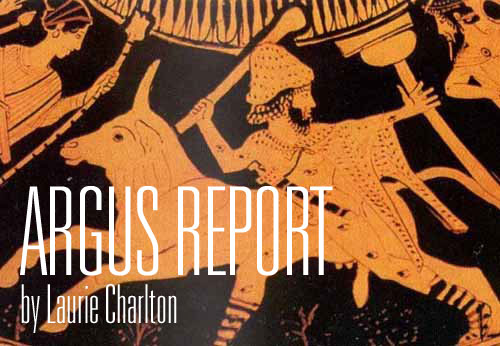The DCC Fiasco
CAO Victor Kumar wants to scrap the City’s Development Cost Charge (DCC) bylaw because it “. . . has served its purpose and is no longer required based on the availability of other taxation tools . . .” Nonsense!
If council goes along with this cockamamy idea, taxpayers in the future will be stuck with paying for expansion of infrastructure to service new development, primarily at Red Mountain. Of course, by the time that happens, the CAO and the current council will be long gone from City Hall.
…the amount of foot-dragging has almost been enough to dig grooves in Columbia Avenue deep enough to bury the pipes required for the coming infrastructure upgrade.
The current DCC bylaw has not served its purpose. Not a single dollar that has been collected through DCCs has been spent on any DCC project.
DCCs are imposed when a development creates the need for new or expanded infrastructure that is only needed to serve that development. DCCs are only imposed on development within areas defined by bylaw and only for projects identified in the DCC background report. DCCs are not collected for general capital purposes throughout the City.
DCCs are collected so that when the time comes to install the new infrastructure, which could be many years in the future depending on the rate of development, there is money available to pay for it. Taxpayers do not, and should not, pay for infrastructure that is only required by the new development.
The City spent almost $100,000 over several years for engineering consultants to determine the infrastructure needs for the new development proposed by major developers. That work estimated the cost of the required infrastructure and when, in terms of the number of units constructed, the infrastructure would need to be installed. If development accelerates, more DCCs are collected and the schedule is moved up. If development slows down, the schedule is delayed. In either case, DCCs are collected from the developers and taxpayers would not have to foot the bill.
In June of 2009, Council, with the exception of Mayor Granstrom and Councillor Wallace, approved a revised list of projects proposed by the engineering consultant AECOM and the residential DCC rates that should be charged to pay for those projects. The consultant was directed to draft a DCC bylaw to be presented to council. It wasn’t a complicated request. The only thing that needed to be done was to change the numbers in a table on one page of a two page bylaw. I wonder why staff didn’t ensure that council’s directive was carried out?
Since that time, the amount of foot-dragging has almost been enough to dig grooves in Columbia Avenue deep enough to bury the pipes required for the coming infrastructure upgrade.
In June 2010, council, based on a recommendation from the CAO, delayed consideration of a revised DCC bylaw until an “infrastructure assessment report” was completed. That report, completed in February 2011, was the result of an assessment of the condition of pavement on the roads throughout town and included a summary of the capital projects that staff were proposing for the next few years.
Other than the sewer line upgrades associated with the Columbia/Washington infrastructure project, not a single project identified in the DCC background report was included in the assessment report. In other words, there was absolutely no need to delay implementation of the DCC bylaw.
In July 2011, in response to repeated inquiries about the status of the DCC bylaw, CAO Kumar finally distributed a report to council recommending DCCs be reduced. His proposed DCC rate reductions were based on arbitrary and unsubstantiated short term growth projections that were not consistent with current OCP long term projections.
In September 2011, Council requested that staff provide a recommendation on the combination of cost charge tools that would best meet the needs of the community.
Mr. Kumar recently responded with a recommendation that the DCC bylaw be rescinded. He suggests that other cost recovery tools could be used to pay for infrastructure needed only by development in the defined areas – primarily Red Mountain. He provides little or no information about how his proposed cost recovery tools might work, what charges might be imposed against which properties, or for which projects. All of his suggestions target properties other than those from which DCCs should be collected.
For example, his proposal for a capacity connection charge would target all new construction anywhere in town. The problem with this proposal is that the vast majority of the City’s current infrastructure has sufficient capacity to handle all the development that might occur in the core of the City in the foreseeable future. The only required capacity increases are those needed to handle the large projected developments at Red Mountain and the golf course.
So why should someone who builds a new home on an infill lot in lower Rossland have to pay a capacity connection charge if that money is going to be used to increase the capacity of a sewer line that is only required to service development at Red Mountain? It makes no sense – and neither does Mr. Kumar’s proposal.
Council must reject Mr. Kumar’s nebulous proposals. The DCC bylaw should be amended to include the rates proposed by the experts who were hired at great expense to advise council on the appropriate charges to ensure developers pay for the infrastructure costs that only arise because of their developments.
























